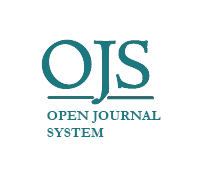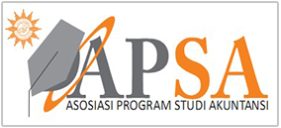Analisis Tren Kecurangan Laporan Keuangan Perbankan: Pre Dan Post Pandemic Covid Di Indonesia
DOI:
https://doi.org/10.22219/jrak.v13i1.25647Keywords:
Beneish Model, Financial Statement Fraud, Pandemic CovidAbstract
Purpose: This study aims to determine the extent of differences in earnings manipulation and the possibility of fraudulent activities in the banking sector in the period before and after the Covid 19 Pandemic in 2016-2021.
Methodology/approach: used is quantitative with a verification approach. The data analysis technique used is Descriptive Statistics and Differential Test using Pair Sample T. Test. Financial Report Quality Indicators using the Bernaish Model which consists of 8 indicators, namely the Quality of Days' Sales in Receivable (DSRI), Gross Margin Index (GMI), Asset Quality Index (AQI), Sales Growth Index (SGI), Depreciation Index (DEPI) Sales, General and Administrative Expenses Index (SGAI) Total Accruals to Total Assets (TATA), Leverage Index (LEVI). The population of this study is the banking sector listed on the Indonesia Stock Exchange during the 2017-2021 period, which amounted to 104 data. The Sample Withdrawal Technique used is Purposive Sampling.
Findings: The quality of financial statements before and after the Covid Pandemic is not significantly different, although the frequency of financial statement fraud after covid has increased.
Practical implications: These finding have implications for companies that indications of financial statement fraud have not changed in the situation before and after the covid pandemic.
Originality/value: This study uses the Classical Beneish Model but through the Paires Sample T test method approach in analysing the comparison before and after Pandemic Covid 19.
Downloads
References
Alam, S. M. I. (2022). Beneish M-Score to Identify the Degree of Manipulation in Financial Statements by Companies Workshop on Faculty Research IBA-JU View project Immunization of Portfolio Investment View project. https://www.researchgate.net/publication/358816884
Ali, Z. N., & Flayyih, H. H. (2021). Empirical Study on the Effect of Adopting the International Financial Reporting Standards (IFRS) on the Quality of Earnings using Beneish Model in a Sample of Banks Listed in the Iraqi Stock Exchange. Studies of Applied Economics, 39(11). https://doi.org/10.25115/eea.v39i11.5830
Aris, N. A., Othman, R., Malek, A., Maznah, S., Arif, M., Affendi, M., Malek, A., & Omar, N. (2013). Cost accounting for service industry , an approach towards resource consumption accounting in administration works View project Fraud Detection: Benford’s Law vs Beneish Model. https://www.researchgate.net/publication/259783068
Awang, Y., & Ismail, S. (2018). Determinants of financial reporting fraud intention among accounting practitioners in the banking sector: Malaysian evidence. International Journal of Ethics and Systems, 34(1), 32–54. https://doi.org/10.1108/IJOES-05-2017-0080
Dan Perjuangan Pemimpin Ojk, K. (n.d.). PERJALANAN SATU DASAWARSA BAKTI OJK BAGI NEGERI. www.ojk.go.id
Darmawan, C., & Budi Yanti, H. (2022). Detecting Fraudulent Financial Statements with Beneish M-Score during the Covid-19 Pandemic. Budapest International Research and Critics Institute-Journal (BIRCI-Journal. https://doi.org/10.33258/birci.v5i3.6078
Lehenchuk, S., Mostenska, T., Tarasiuk, H., Polishchuk, I., & Gorodysky, M. (2021). Financial Statement Fraud Detection of Ukrainian Corporations on the Basis of Beneish Model. Lecture Notes in Networks and Systems, 194 LNNS, 1341–1356. https://doi.org/10.1007/978-3-030-69221-6_100
Mahama, M. (2015). DETECTING CORPORATE FRAUD AND FINANCIAL DISTRESS USING THE ALTMAN AND BENEISH MODELS THE CASE OF ENRON CORP. In International Journal of Economics, Commerce and Management United Kingdom: Vol. III (Issue 1). http://ijecm.co.uk/
Mantone Pamela S. (2013). Using Analytics to Detect Possible Fraud.
Maria, S., Yudaruddin, R., & Yudaruddin, Y. A. (2022). The impact of COVID-19 on bank stability: Do bank size and ownership matter? Banks and Bank Systems, 17(2), 124–137. https://doi.org/10.21511/bbs.17(2).2022.11
Martantya Daljono. (2013). Referensi 5 Pendektesian Laporan Keuangan. Diponegoro Journal Of Accounting, 2, 1–12.
Narsa Niluh Putu Dian Rosalina Handayani, Afifa Lesta Mega Evi, & Wardhaningrum Oktaviani Ari. (2023). Fraud triangle and earnings management based on the modified M-score_ A study on manufacturing company in Indonesia _ Elsevier Enhanced Reader. Heliyon.
Nyakarimi, S. (2022). Probable earning manipulation and fraud in banking sector. Empirical study from East Africa. Cogent Economics and Finance, 10(1). https://doi.org/10.1080/23322039.2022.2083477
Ozili, P. K. (2022). Bank Income Smoothing During the COVID-19 Pandemic: Evidence from UK Banks (pp. 127–139). https://doi.org/10.1108/s1569-37592022000109b008
Raghib Talab, H., Flayyih, H. H., & Ali, S. I. (2015). Role of Beneish M-score Model in Detecting of Earnings Management Practices: Empirical Study in Listed Banks of Iraqi Stock Exchange. www.serialsjournals.com
Sidauruk Suando, & M Rizal Rustam. (2022). Analisis_Kebijakan_Penundaan_Pembayaran_Kewajiban_. Jurnal Hukum Magnum Opus, 5(2).
Soepriyanto, G., Meiryani, Ikhsan, R. B., & Rickven, L. (2022). Analysis of Countercyclical Policy Factors in The Era of the COVID-19 Pandemic in Financial Statement Fraud Detection of Banking Companies in Indonesia. Sustainability (Switzerland), 14(16). https://doi.org/10.3390/su141610340
Sood, P., & Bhushan, P. (2020). A structured review and theme analysis of financial frauds in the banking industry. Asian Journal of Business Ethics, 9(2), 305–321. https://doi.org/10.1007/s13520-020-00111-w
Tarjo, & Herawati, N. (2015). Application of Beneish M-Score Models and Data Mining to Detect Financial Fraud. Procedia - Social and Behavioral Sciences, 211, 924–930. https://doi.org/10.1016/j.sbspro.2015.11.122
Ustinova, Y., Mohan Gupta, C., & Shaposhnikov, A. (2022). Creative Accounting Detection Methods: Foreign Experience. https://www.bbc.com/news/business-53573408
Valaskova, K., & Fedorko, R. (2021). Beneish M-score: A measure of fraudulent financial transactions in global environment? SHS Web of Conferences, 92, 02064. https://doi.org/10.1051/shsconf/20219202064
Warshavsky Mark. (2012). Referensi 7 MW-Analyzing-Earnings-Quality-as-a-Financial-Forensics-Tool. 39, 16–20.
Downloads
Published
Issue
Section
License
Copyright (c) 2023 Kania Nurcholisah, Pupung Purnamasari, Edi Sukarmanto

This work is licensed under a Creative Commons Attribution-NonCommercial-ShareAlike 4.0 International License.

Jurnal Reviu Akuntansi dan Keuangan is licensed under a Creative Commons Attribution-NonCommercial-ShareAlike 4.0 International License.
Authors who publish with this journal agree to the following terms:
- Authors retain copyright and grant the journal right of first publication with the work simultaneously licensed under a Creative Commons Attribution-NonCommercial-ShareAlike 4.0 International License that allows others to share the work with an acknowledgement of the work's authorship and initial publication in this journal.
- Authors are able to enter into separate, additional contractual arrangements for the non-exclusive distribution of the journal's published version of the work (e.g., post it to an institutional repository or publish it in a book), with an acknowledgement of its initial publication in this journal.
- Authors are permitted and encouraged to post their work online (e.g., in institutional repositories or on their website) prior to and during the submission process, as it can lead to productive exchanges, as well as earlier and greater citation of published work (See The Effect of Open Access).










